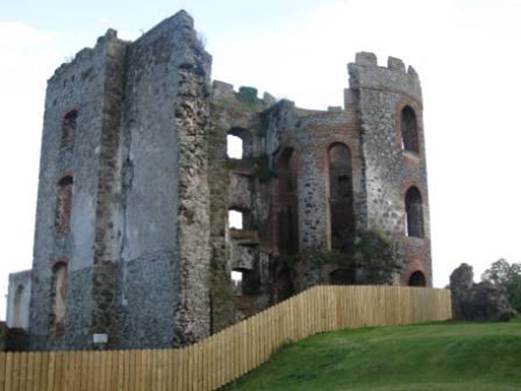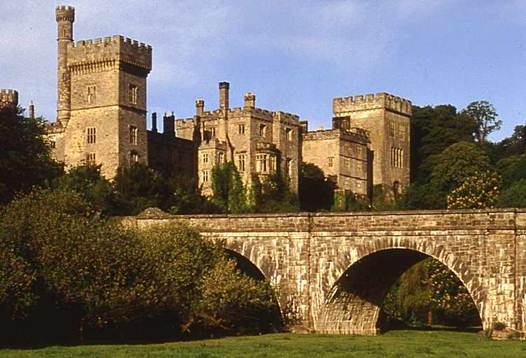A trip across IRELAND reveals surprises
beyond medieval ghosts and family ties
I’m standing in a muddy field in Country
Antrim, just outside Belfast, Northern Ireland, surrounded by hundreds of
enraged sheep. They’re bleating violently, puncturing the peace of the
picturesque emerald countryside as if to say “You don’t belong here”. They’re
right. My boyfriend, Erik, and I have ignored multiple “No trespassing” signs
(and even hopped a fence) to search for the derelict remains of Shane’s Castle,
my family’s ancestral château. You’d think the ruins would be hard to miss, but
most Irish castles were built deep in the forest to protect against foes and
deter starving peasants from begging at their gates. “Are sheep violent?” asks
Erik, half kidding, but we feel like intruders. It’s our first trip to Ireland,
and since both sides the week driving from one side of the country to the other
to discover my ancestral roots – and check out some famous castles along the
way. We head back to the car and exit the castle’s outer gate, an imposing
stone structure with the O’Neill family coat of arms – red hand – showcase
prominently in the centre. It’s not your typical family sigil: The legend goes
that centuries ago, my great-great-grand-something raced an opponent across the
River Liffey in a boat with the promise that whoever touched the soil first would
win all of Ireland as a reward. My ancestor could tell that he was going to
lose, so he chopped off his left hand and hurled it to the shore. He was named
the King of Ireland and lived at Shane’s Castle, which is still owned by his
descendants to this day.

Shane's
Castle was destroyed by fire in 1816.
It would be easy to dismiss this story as a
tall tale that’s been enhanced over hundreds of years and just as many prints
of Guinness, but I like to think it’s true. The Irish people we’ve met here are
natural storytellers, happy to regale us with historical tales in their
singsong accents. While horseback riding on a trail around the grounds of
Castle Leslie, just south of Northern Ireland, our guide Dermot nods toward the
large stone barrier lining the property of the castle. “That’s the famine
wall”, he says would line up there to beg for food. Once, a man from the
village jumped the wall and stole a calf to feed his family”. My horse,
Two-tone, grunts. Dermot lowers his voice. “The Leslie family beheaded the man
as punishment and carried his head around in a cloth bag to warn others. That
bag is still on display in the castle”. Yikes!

Castle
Leslie – County Monaghan, Ireland
A few days later, when we pull up to
Ashford Castle, a sprawling medieval pile in County Mayo, two hours from Castle
Leslie, I nudge Erik. “I can’t wait to hear the story behind this place”, I say
with a giggle, taking in the miles of manicured landscape peppered with
enormous stone fountains. As soon as we walk inside, I feel a chill on the back
of my neck. “Ashford is haunted”, I declare. Turns out I’m right. That night,
during a decadent five-course meal at George V (the castle’s grand ballroom
turned fine-dining restaurant), Martin, the maître d’ (a dead ringer for
Downtown Abbey’s Carson), tells us about the castle’s resident ghost. “One
time, there were no guests in the castle, but the porter kept getting rung by
room 430 over and over again”, says Martin seriously. “Every time we went up,
there was no one in the room”. Suddenly, my chargrilled scallops are much less
interesting than Ashford’s ghost. I coax Martin to continue and take a deep
swig of Chablis. He leans in. “Many people who stay in that room overnight hear
a woman’s voice asking ‘Where’s Elaine? Where’s Elaine?”
That night, as I lie in a dark-oak
four-poster bed, under a thick red canopy, I try to forget that our suite is
900 year old and – worst luck – directly under room 430. “Don’t be scared”,
says Erik. “We’ll be fine”. Still, I insist on sleeping with the TV and all the
lights on. The next morning, Erik tells me he had a waking dream that a woman
came to our bedside. In spite of Ashford’s grandiose luxury, I’m eager to get
somewhere that’s a little less haunted.
It’s our last full day in Ireland, so we
decide to track down the Staffords, my mother’s side of the family. Our
destination is Lismore, near the southern tip of the country, where my
ancestors held a small plot of land during the potato famine before most of
them immigrated to Montreal in 1874. The natural beauty in Lismore is
staggering – the road we follow runs parallel to a gurgling brook surrounded by
wild tulips and dense foliage in hundreds of shades of green. We locate the
town’s cathedral and wander the rows of crooked tombstones, which are so old
it’s almost impossible to make out their inscriptions. I find the grave of
James Quinn, a distant relation, who was only 16 when he died in 1910. It’s
covered in moss, forgotten and almost completely overgrown. I wonder how he
died. Erik and I stand in front of his grave for ages, holding hands. Neither
of us wants to disturb the stillness of the cemetery.

Lismore
Castle is perhaps the most spectacular castle in Ireland and has been the Irish
home of the Duke of Devonshire since 1753.